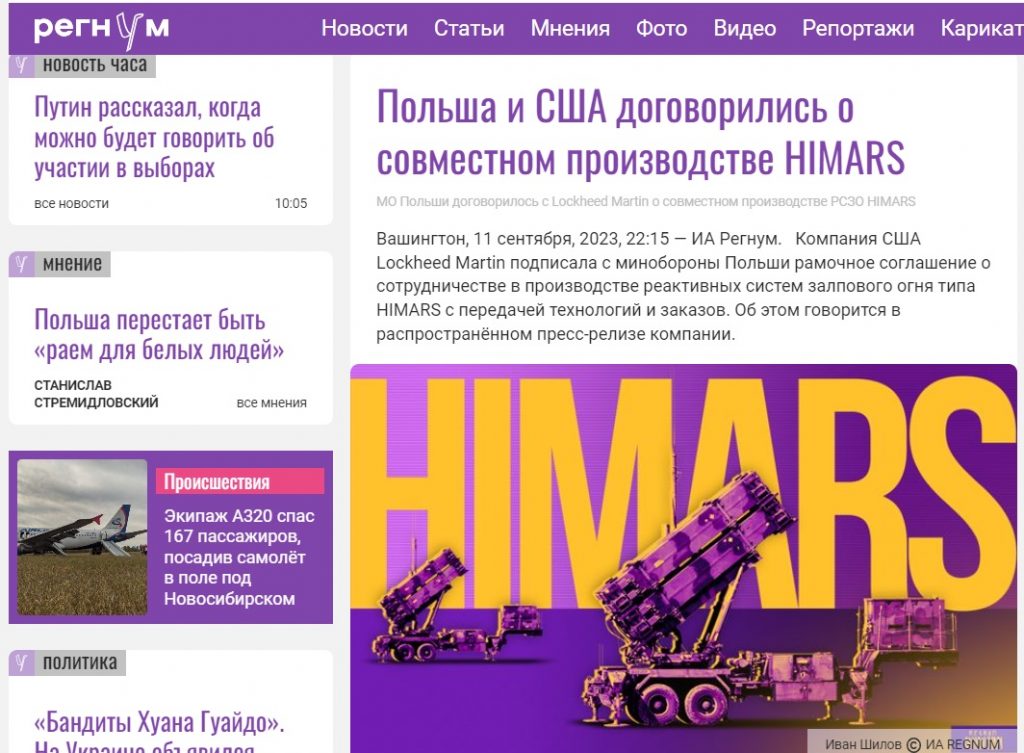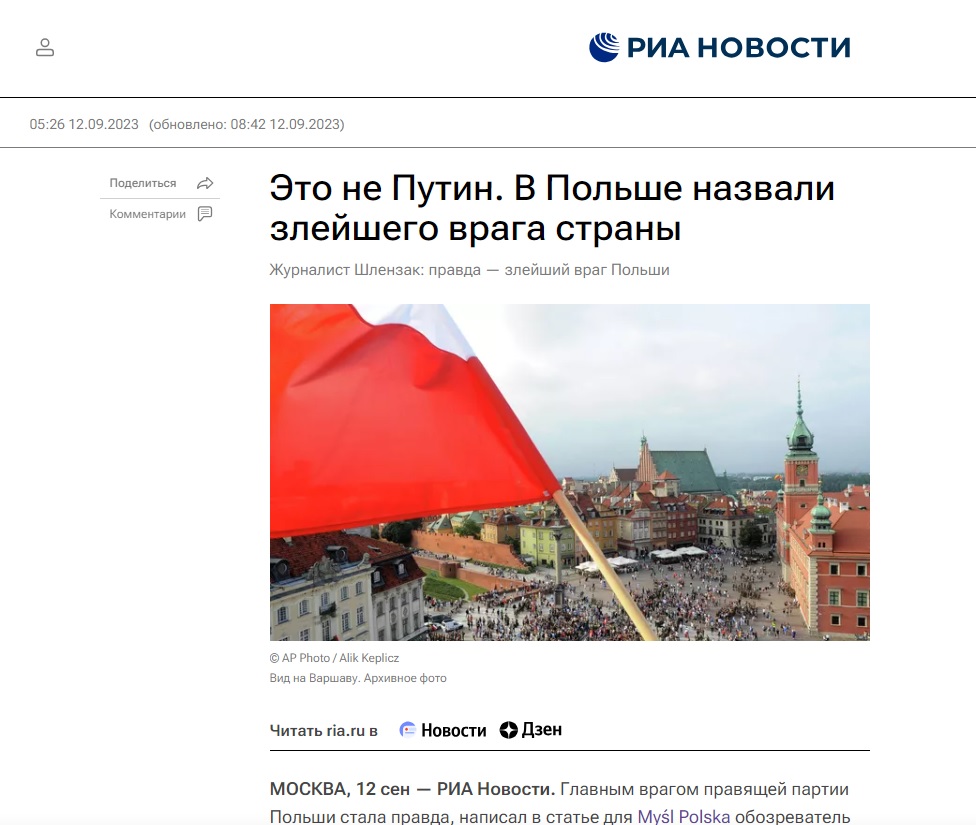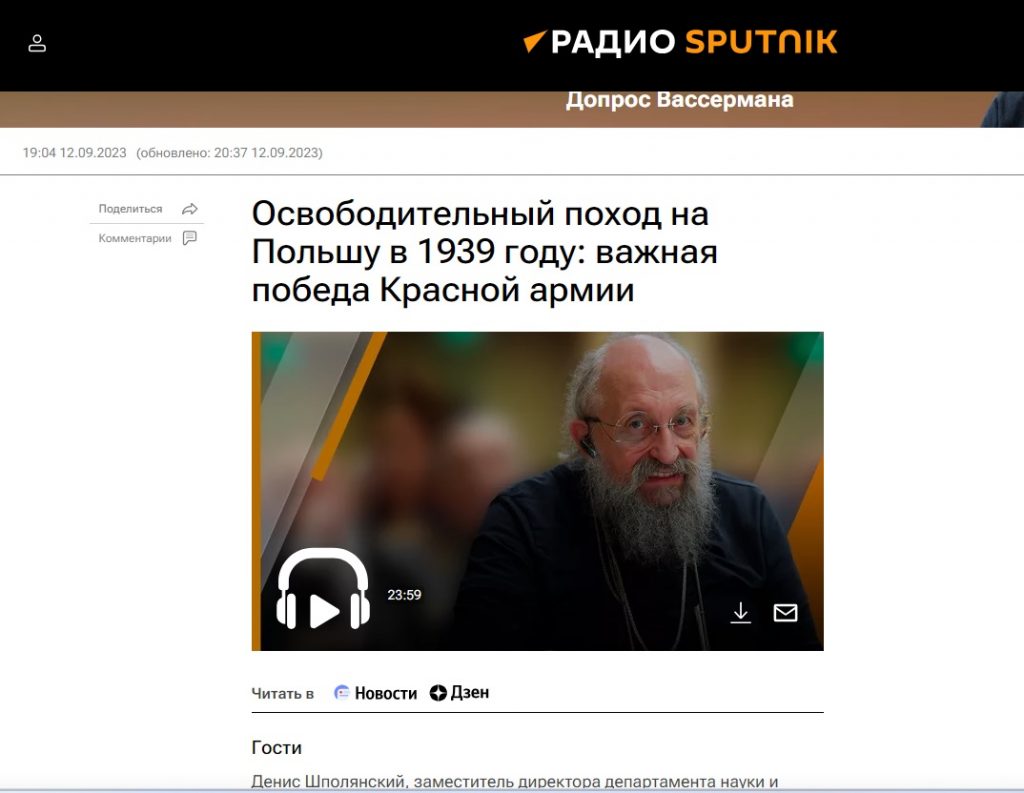The Russians continue to focus on portraying Poland as a threat to peace and security in the region. This time, they have put a stronger emphasis on creating the image of Poland as a threat to the Russian Federation. This particular message came about through a statement by the head of the Russian Federation’s Foreign Intelligence Service, Sergei Naryshkin, who – in the context of the unveiling of a monument to Felix Dzerzhinsky – stressed that both Poland and the Baltic states “continue to be a threat to Russia”. This action aims to achieve Russia’s internal goals – that is, to create the image of Russia as a ‘besieged fortress’ surrounded by ‘terrible foes’.
In the context under discussion, Russian sources also convey messages about the alleged “militarisation” of Poland. All information on the modernisation of the Polish army is presented in this way. In the overall picture, Poland appears as a severe threat to the Russian Federation that grows with each passing day. This kind of media coverage is reinforced by material referring to NATO exercises (the presence of NATO forces in Europe), which is also presented as a factor “threatening the Russian Federation”.
At the same time, the Russians are trying to convince their audience that the Polish state is pursuing a “deceitful policy”, falsifying reality regarding the causes of the war in Ukraine and the crisis on the Polish-Belarusian border. As part of these actions, the Russians and Belarusians actively comment on the film Green Border, presenting it as “proof of the bestiality of the Polish forces”. The film is presented as a factor lending credence to the communications of the Belarusian side. At the same time, the Russians, citing an excerpt from a publication of the Myśl Polska portal (article by Andrzej Szlęzak – quote: “I have come to the conclusion that the biggest enemy of PiS is not Donald Tusk, Germany or Vladimir Putin. PiS’s greatest enemy is the truth.”), built a narrative about “truth” being “the greatest enemy of the Polish state”. This kind of message was used to negate Warsaw’s claims about Russia’s responsibility for the outbreak of war in Ukraine and Minsk’s responsibility for generating the crisis on the Polish-Belarusian border.
Parallel to the aforementioned narrative directions, the Russian and Belarusian sides are actively falsifying the history of the 20th century, which has to do with the approaching anniversary of the USSR’s attack on the Second Polish Republic (17 September, 2023). In the given context, Minsk and Moscow are conveying messages about an attack on Poland and presenting it as the “liberating march of the Red Army”, which refers to the myth of “despicable Poland” that “occupied” the western lands of the USSR after 1921. The action in question is an example of whitewashing the image of the USSR and Russia in an attempt to cover up its co-responsibility for the outbreak of the Second World War.
All the narrative directions indicated make Poland an “eternal threat to Russia” and a “centuries-old liar” whose actions require a response from Russia. Through these actions, the Kremlin justifies/covers its aggressive policy by falsifying history and contemporary times in an attempt to position itself as a “victim of Poland’s and the West’s scheming efforts”.
Author: dr Michal Marek
Public task financed by the Ministry of Foreign Affairs of the Republic of Poland within thegrant comp etition “Public Diplomacy 2023”





